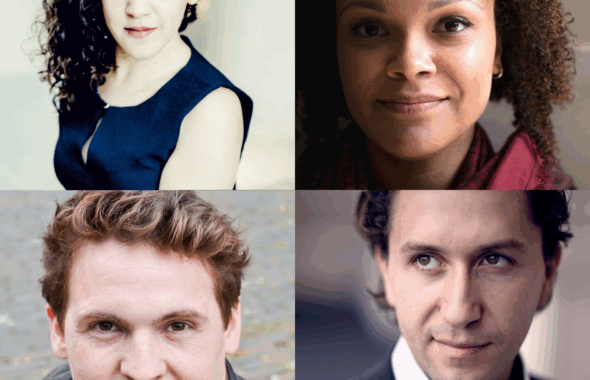
Johann Sebastian Bach (1685-1750)
« Symbolum Nicenum » from the B minor mass, BWV 232 avec Introduction H 848 de Carl Philipp Emanuel Bach
Georg F. Händel (1685-1759)
Messiah HWV 56 (1741) – extracts
Carl Philipp Emanuel Bach (1714-1788)
Sinfonia in D Major, Wq 183,1/H.663 (1775) Magnificat in D Major, Wq 215/H.772 (Hamburg version, 1779) Heilig, Wq 217/H.778 (1776)
Rachel Redmond Soprano
Hagar Sharvit Mezzo-soprano
William Knight Tenor
Kresimir Strazanac Bass
Vocalconsort Berlin
Les Talens Lyriques
Christophe Rousset Direction
In Hamburg on 8 April 1786, a special charity concert was given in support of a medical institute for the poor. Carl Philipp Emanuel Bach, then aged seventy-two and music director of Hamburg’s five main churches and Kapellmeister of the famous Johanneum school, conducted major works by his father, Johann Sebastian Bach, his father’s contemporary Georg Friedrich Händel, then some of his own compositions.
That concert may be seen as representing the quintessence of his musical life. It seems that the first public performance of the Symbolum Nicenum (“Credo”) section of J. S. Bach’s B-Minor Mass (BWV 232) – Carl Philipp Emanuel had inherited the manuscript score – took place on that occasion. Since the Credo began without a choral prelude, he composed for his father’s work a slow, sober but expressive instrumental introduction for strings. The concert continued with “Ich weiß, daß mein Erlöser lebet” and the “Hallelujah” chorus from Händel’s Messiah.
The second half of the concert clearly opened with one of the four so-called “Hamburg” Symphonies Wq. 183, but there is uncertainty as to which one. This was followed by Carl Philipp Emanuel’s setting of the Magnificat(Wq. 215), his first great choral work, composed in 1749 and revised around 1779. This solemn piece, a descendant of his father’s B-minor Mass, brings out all the magnificence and jubilation of the canticle of the Virgin Mary, while expressing the universality of the announced birth of Christ. The programme ended with his double-chorus Heilig(Wq. 217), which he considered one of his most successful creations. As one critic wrote in 1779: “Even if [he] had written nothing other than this Heilig, his name by that alone would have been remembered by many generations of music connoisseurs to come.”
“In the 1780s, Carl Philipp Emanuel Bach was in full possession of his abilities. His Magnificat is an astonishing work, very different from the one written by his father and imbued with the Sturm und Drang style, with highly expressive and virtuosic arias. Although the unity of this program is given by the fact that Carl Philipp Emanuel himself chose it, it is nevertheless very eclectic in expression and in the styles that are covered.”
Christophe Rousset